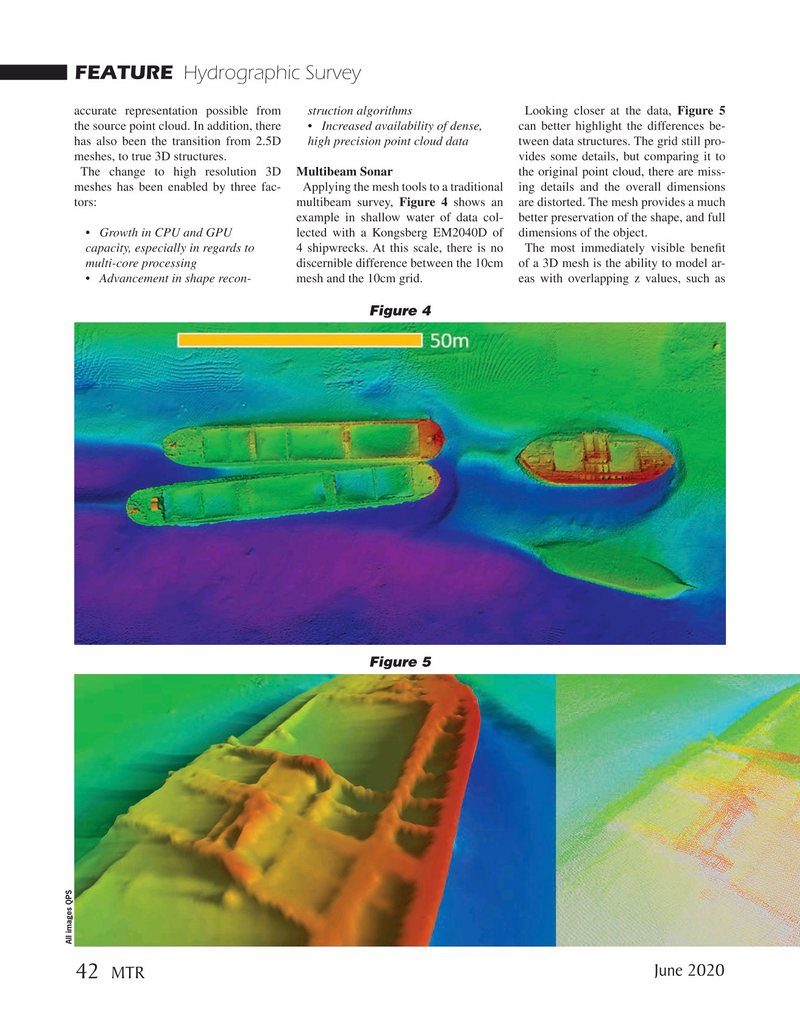
Page 42: of Marine Technology Magazine (June 2020)
Read this page in Pdf, Flash or Html5 edition of June 2020 Marine Technology Magazine
FEATURE Hydrographic Survey accurate representation possible from struction algorithms Looking closer at the data, Figure 5 the source point cloud. In addition, there • Increased availability of dense, can better highlight the differences be- has also been the transition from 2.5D high precision point cloud data tween data structures. The grid still pro- meshes, to true 3D structures. vides some details, but comparing it to
The change to high resolution 3D Multibeam Sonar the original point cloud, there are miss- meshes has been enabled by three fac- Applying the mesh tools to a traditional ing details and the overall dimensions tors: multibeam survey, Figure 4 shows an are distorted. The mesh provides a much example in shallow water of data col- better preservation of the shape, and full • Growth in CPU and GPU lected with a Kongsberg EM2040D of dimensions of the object. capacity, especially in regards to 4 shipwrecks. At this scale, there is no The most immediately visible beneft multi-core processing discernible difference between the 10cm of a 3D mesh is the ability to model ar- • Advancement in shape recon- mesh and the 10cm grid. eas with overlapping z values, such as
Figure 4
Figure 5
All images QPS
June 2020 42
MTR

 41
41

 43
43
